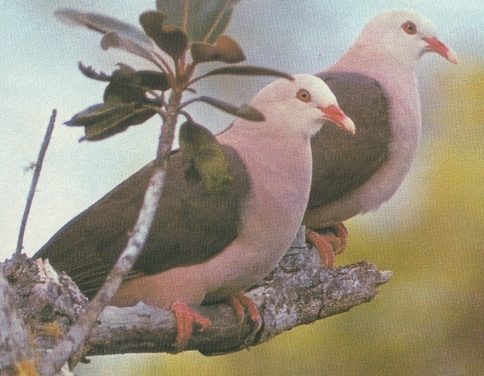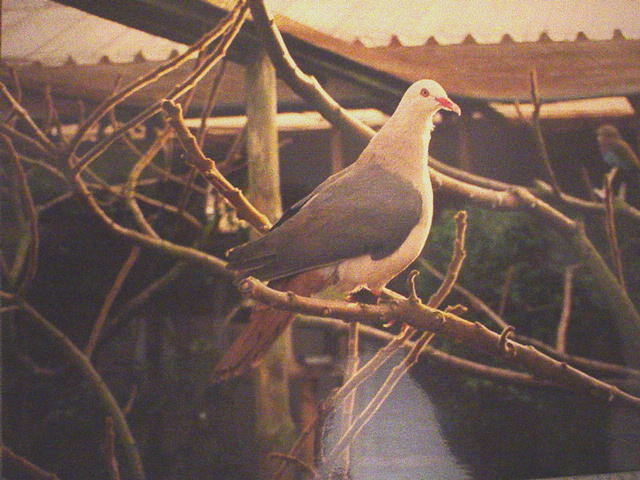
pic National Geographic Soeciety
Pink Pigeon
Streptopelia mayeri
AKA: Mauritius Pigeon, Chestnut-tailed Pigeon, Pigeons des Mares

pic National Geographic Soeciety

İCanbulat Sonmez - Chesterfield Zoological Gardens

İHarewood Bird Gardens
Distribution: Is endemic to Mauritius, where a small wild population exists in the wet upland forests of the south west region of the island. The wild population fell to a low of 18 birds in 1984; an intense international rescue effort, backed by the Mauritian Government has been quite successful in halting the "extinction" of this species. Young from the captive breeding program were released in three different parts of the forest. The wild population of Pink Pigeons now numbers more than 250 birds. The captive breeding & release program will continue until the number of wild birds exceeds 500. These birds are subject to intensive management & their survival is also dependent upon long term management.
Description: (Prevost 1843). Length 40 cm. Head, neck & breast a delicate pinkish white, shading to duskier pink on the mantle & flanks & shading to a bit darker on the belly & undertail coverts. Wing shields dark chocolate brown with the primaries slightly darker brown; Upper back dark pink lower back & rump bluish grey; uppertail coverts & tail reddish orange or chestnut; iris white or pale yellow; eye cere deep red; bill red with a horn or light tip. Female similar but duller with browner rump. Juvenile like adult hen, but much duller & has buff feather edges on wing shields.
Nesting: Clutch two white eggs; incubation is 14 days; juveniles fledge within three weeks.
NOTES: The African Collared Dove has been used very successfully in a fostering program for this species in several zoos in the US.
(Read the article on classifications of the Streptopelia & Columba done in 2001)